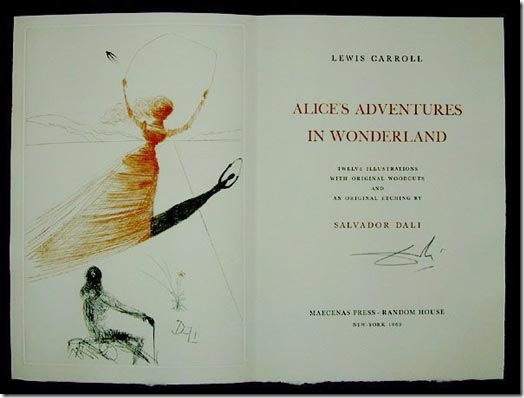Salvador Dali (1904 – 1989)
Spanish painter, graphic artist, filmmaker, writer. A modern master of the surreal arts, Salvador Dali’s works continually challenged convention by questioning the antithesis of surrealism: our normal sense of the “real.” Salvador Dali, a renowned artist of the surrealist movement, is popular for his imaginative and dream like paintings (and that mustache!). Dali has left us many masterpieces including ‘The Persistence of Memory’ and ‘Apparition of a Face & Fruit Dish on a Beach’. However, Dali had also created a collection of boldly colored illustrations for Lewis Caroll’s classic tale ‘Alice in Wonderland’ (1865).
“If I had a world of my own, everything would be nonsense. Nothing would be what it is, because everything would be what it isn’t. And contrary wise, what is, it wouldn’t be. And what it wouldn’t be, it would. You see?”
― Lewis Carroll, Alice’s Adventures in Wonderland & Through the Looking-Glass
Dali’s incredible illustrations for Lewis Carroll’s “Alice in Wonderland” (published in 1865) have caused it to become one of the rarest and most sought-after Dali suites. With the original gouaches published by Maecenas Press-Random House, New York in 1969, the suite now contains 12 heliogravures – one for each chapter of the book – and comes with 1 original signed etching in 4 colors as the frontpiece.
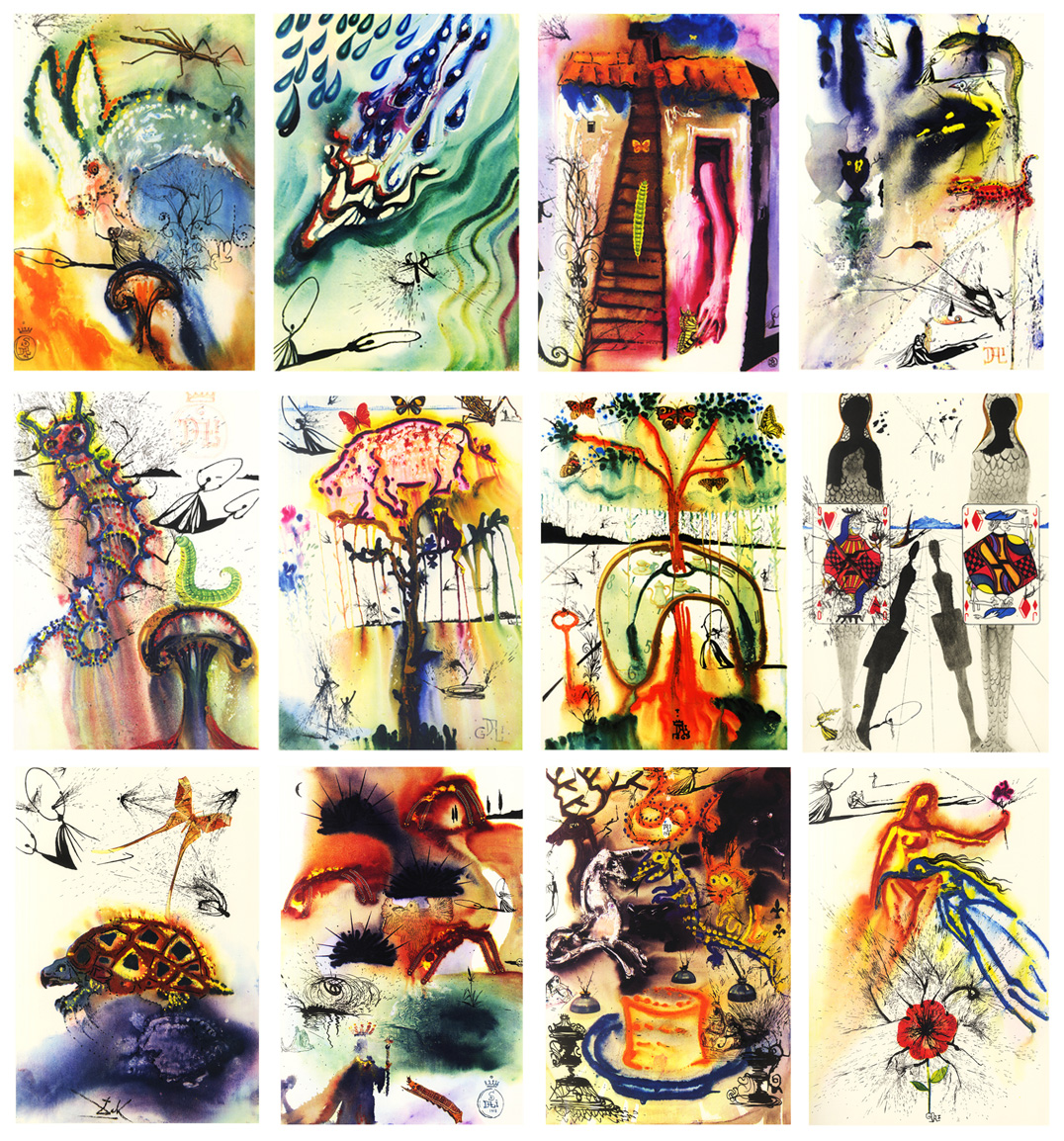
Salvador Dali’s Illustrations: Alice in Wonderland, 1969
This collaboration brings together arguably two of the most creative minds in Western culture, as both are considered ultimate explorers of dreams and imagination. As reader Varvn Aryacetas points out on Twitter, exactly two decades later a collaboration of epic proportion took place as the Lewis Carroll classic was illustrated by none other than Salvador Dalí. (And let’s not forget what a soft spot I have for obscure children’s illustration by famous artists.) Published by New York’s Maecenas Press-Random House in 1969 and distributed as their book of the month, the volume went on to become one of the most sought-after Dalí suites of all time.
And who better to provide the illustrations than Salvador Dali? The flamboyant Spanish artist made the four-color frontispiece above and one full-color image for each chapter. (See the illustrations for “Down the Rabbit Hole”.).

Down the Rabbit Hole | Alice In Wonderland | Salvador Dali
Alice’s Adventures in Wonderland has seen publication in several dozen illustrated editions (and at least twenty films). Most people associate the initial publication of Alice with the John Tenniel illustrations that appeared in the first edition, and rightly so, but Carroll himself provided his own drawings in the manuscript of the book. Alice has always had a visual complement.
And Dali? As you can see , his vision updates mid-century abstract expressionism as an LSD-fueled daydream (or nightmare). Dali used an old photographic reproduction technique called heliogravure to produce these trippy, hyper-saturated pieces. The illustrations, of course, are vivid to the point of searing and perhaps more than a little insane. All of the usual suspects are present and accounted for – the Rabbit, the Caterpillar, the Queen of Hearts.
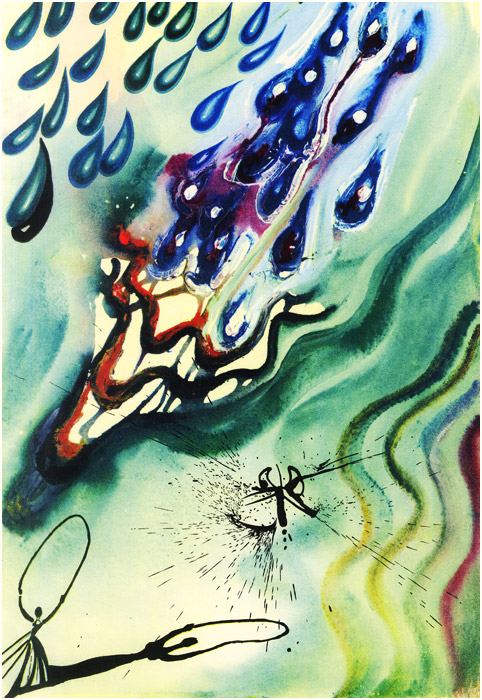
The Pool of Tears | Alice In Wonderland | Salvador Dali

Advice From a Caterpillar | Alice In Wonderland | Salvador Dali
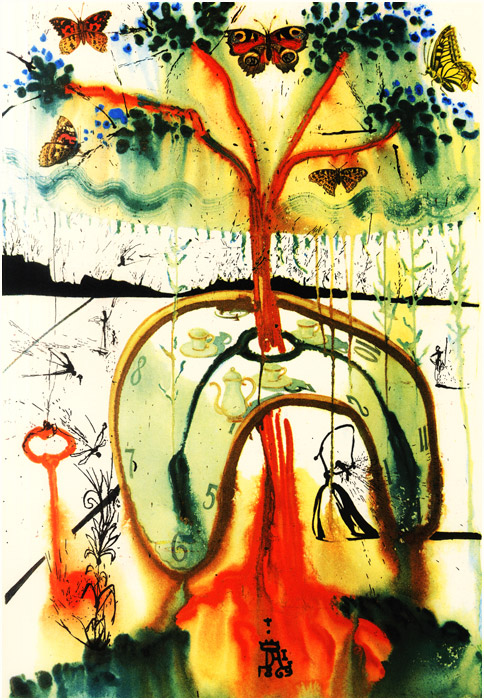
Mad Tea Party | Alice In Wonderland | Salvador Dali
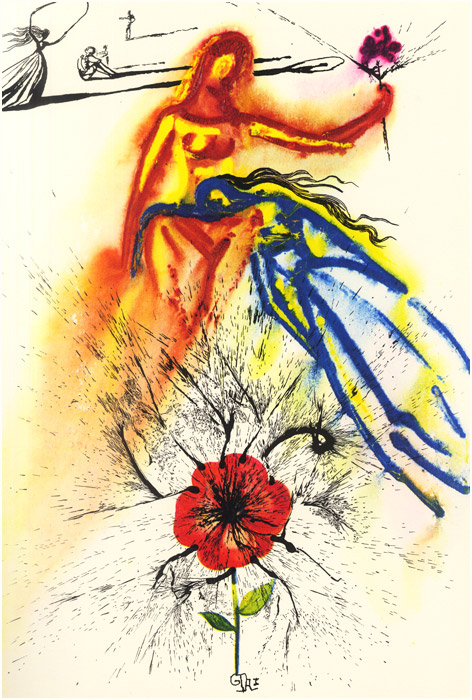
Alice’s Evidence | Alice In Wonderland | Salvador Dali
When you look at Salvador Dali’s illustrations, you can see that each image represents his style as an artist. But I have to say, the thing I love most is the sometimes large, sometimes small image of Alice jumping rope. You see her first in the frontispiece and then in every illustration thereafter. Salvador Dali’s representation of the classic tale captures the eccentric and nonsensical world that is Wonderland. The illustrations make use of bold splashes of colour to create a dreamlike effect which is equally as disorienting as the tale itself!
Mostly I think it’s because I see it as Dali’s nod to the fact that – crazed characters and beautiful art aside – the most important part of Alice is Alice herself.

